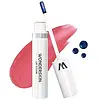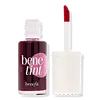What's inside
What's inside
 Key Ingredients
Key Ingredients

 Benefits
Benefits

 Concerns
Concerns

 Ingredients Side-by-side
Ingredients Side-by-side

Water
Skin ConditioningPentylene Glycol
Skin ConditioningButylene Glycol
HumectantMica
Cosmetic ColorantAlgin
MaskingGlycerin
HumectantIndigofera Tinctoria Leaf Extract
Skin ConditioningCeramide AP
Skin Conditioning1,2-Hexanediol
Skin ConditioningCaprylyl Glycol
EmollientHydroxyethyl Acrylate/Sodium Acryloyldimethyl Taurate Copolymer
Emulsion StabilisingSqualane
EmollientCaprylyl Glucoside
CleansingAroma
Polysorbate 80
EmulsifyingTin Oxide
AbrasiveLactic Acid
BufferingGlucose
HumectantCI 77891
Cosmetic ColorantCI 45380
Cosmetic ColorantCI 42090
Cosmetic ColorantCI 16035
Cosmetic ColorantCI 19140
Cosmetic ColorantCI 17200
Cosmetic ColorantWater, Pentylene Glycol, Butylene Glycol, Mica, Algin, Glycerin, Indigofera Tinctoria Leaf Extract, Ceramide AP, 1,2-Hexanediol, Caprylyl Glycol, Hydroxyethyl Acrylate/Sodium Acryloyldimethyl Taurate Copolymer, Squalane, Caprylyl Glucoside, Aroma, Polysorbate 80, Tin Oxide, Lactic Acid, Glucose, CI 77891, CI 45380, CI 42090, CI 16035, CI 19140, CI 17200
 Reviews
Reviews

Alternatives
Ingredients Explained
These ingredients are found in both products.
Ingredients higher up in an ingredient list are typically present in a larger amount.
Water. It's the most common cosmetic ingredient of all. You'll usually see it at the top of ingredient lists, meaning that it makes up the largest part of the product.
So why is it so popular? Water most often acts as a solvent - this means that it helps dissolve other ingredients into the formulation.
You'll also recognize water as that liquid we all need to stay alive. If you see this, drink a glass of water. Stay hydrated!
Learn more about Water